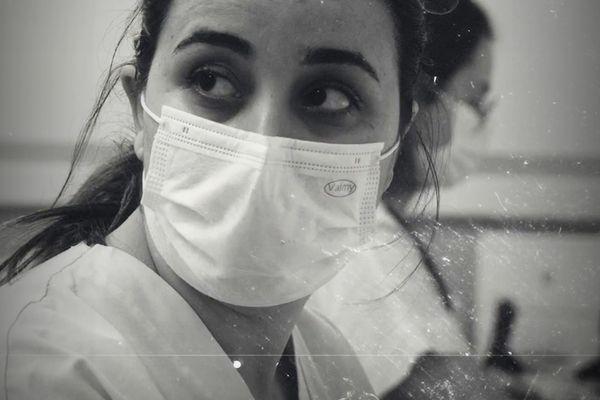Guyana has been on general strike since March 27. In particular, residents are calling for an improvement in the health system.

The atmosphere is peaceful. But the anger is there, behind the slogans hammered in Guyanese Creole. And the demonstrators are not about to let go. Guyana has been on a general strike since March 27, and the movement continues. After the roadblocks, a march was organized in Cayenne, the capital, and Saint-Laurent-du-Maroni, the second city of the department. The government finally gave in on sending a delegation of ministers.
On March 29, the Interior and Overseas Ministers Matthias Fekl and Ericka Bareigts are therefore expected in the largest department in France. They will have to find solutions to begin to emerge from the crisis. The task is not small.
Lots of medical evacuations
Insecurity, unemployment, economic development… There are many complaints against the government. Guyana lags behind the mainland. The healthcare sector is no exception.
250,000 French people live in this department, 7,000 km from the capital. But the health care system is underdeveloped there. On the hospital side, 7 hospitals – including two public ones – take care of the population. In 2014, they only offered 380 beds for 100,000 people. It is two times less than in metropolitan France.
However, Cayenne’s permanent care area is the largest in France. And to say that it is used to the extreme is almost an understatement. “There is a huge lack of specialists,” confirms Félix Ngomba-Wongola, general practitioner in Cayenne. We, general practitioners, do our best to compensate for this lack, and we redirect to the hospital when possible. “
But even in the hospital, the lack is obvious. Neurosurgeons, oncologists, diabetologists… the list of professions that are absent or under strain is long. Result: “we do a lot of medical evacuations to the metropolis and the West Indies”, according to Dr. Ngomba-Wongola.
Fragile hospitals
The Court of Auditors took stock of overseas health in 2014. It is cold in the back. Les Sages de la rue Cambon describe the hospital sector as “the backbone of the healthcare system”. But the frame lacks solidity. Few human resources, lack of material investment, lack of services: these are some of the flaws pointed out by the report.
One only has to observe the two main hospitals to be convinced of the extent of the problem. Saint-Laurent-du-Maroni hosts one of the largest maternity hospitals in France. But the service was only renovated in 2014. The Cayenne hospital, meanwhile, was placed under supervision in March 2016.
In town, the situation is hardly more enviable. “Ambulatory medicine plays an essential role, recognizes the Court of Auditors, but it is heterogeneous and unbalanced in relation to the hospital offer. In fact, in 2012, there were not 71 active practitioners in the department. They are mostly concentrated in cities.
The more relaxed areas, they must be content with health centers managed by the CH Cayenne. “The distance between campou and the health centers can represent several hours of pirogue ”, recently confided the Dr Yves-Marie Ducrot, assistant coordinating doctor of the health centers of Guyana.
The busy days of a doctor
Guyana is officially recognized as a deficit area in liberal generalists. For the few doctors who work there, the task is therefore difficult. “We arrive in the morning, around 7 am, and the toilets are full,” says Félix Ngomba-Wongola. Patients arrive around 4 a.m. to queue. “The reasons are varied: general medicine, dermatology, infectious diseases …” The general practitioner in Guyana is overbooked and very versatile, because we do not have all the specialties “, summarizes this doctor from metropolitan France.
The practitioners who work in Guyana are unanimous: the department has bad press, wrongly. “The image of difficult territory sticks to Guyana, concedes Dr. Ngomba-Wongola. It has a lot of strengths but sells very poorly. ”
So how can the attractiveness of the department be improved? The Court of Auditors considers that it is necessary to “boldly” develop cooperation between health professionals. Developing boarding schools in the region could also reconcile with this part of France. Félix Ngomba-Wongola goes further: we need tax incentives. “Good publicity, tax exemption laws and good communication would be significant assets,” he says.
While waiting for an improvement, the Guyanese understood it: they will have to manage. Attempts are regularly launched to try to reduce the gap between isolated villages and caregivers, mainly around telemedicine. The strikers, for their part, have chosen to grant a pass to all health professionals. Proof of their essential place in society.
Funds released for Guyanese hospitals
The complaints were partly heard. In a press release published on March 29, the Minister of Social Affairs and Health and the Minister of Overseas Territories, Marisol Touraine and Ericka Bareigts, announced financial aid intended for hospitals in Guyana. The Cayenne hospital will thus receive 20 million euros, starting this year, in order to “reconstitute its cash flow and settle its current debts without delay”. The establishment will also be able to count on 40 million euros to invest and modernize its tools and premises.
The other hospitals are not to be outdone. In Kourou, the Red Cross agreed not to hand over the premises to a private operator. It remains to define a viable solution for the establishment. But if the Minister of Health reaffirms her support for hospitals, she is once again forgetting liberal doctors. However, in Guyana more than in mainland France, they are at the heart of the healthcare system.
.















